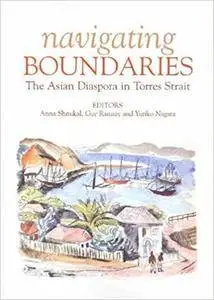Navigating Boundaries: The Asian Diaspora in Torres Strait by Anna Shnukal
English | Mar. 15, 2005 | ISBN: 1740760891 | 342 Pages | PDF | 5 MB
English | Mar. 15, 2005 | ISBN: 1740760891 | 342 Pages | PDF | 5 MB
THE COMING TOGETHER of diverse peoples in a defined geographical space implies the prior navigation of geopolitical or physical boundaries and the subsequent navigation of social and cultural boundaries. To move from place to place is necessarily to navigate the boundaries between places, an experience that is invariably stimulating and ultimately enriching for its participants, producing cooperation and conflict in the forging of a new identity. New spatial borders, social values, economic interactions and political positionings are claimed, challenged and negotiated to produce new, if also transient equilibria. What has come to be known as ‘multiculturalism’ is now the norm of Australian contemporary urban society. Although this is viewed as a recent innovation, even a historical aberration, in fact, Australia’s cultural pluralism has many antecedents in the nation’s pre-colonial and colonial period, its ‘polyethnic past’. One example is Torres Strait in north-eastern Australia, a region uniquely positioned at the confluence of the Australian continent, South-East Asia and the Pacific. Here, as in other 19th-century northern centres, the convergence of Australian Indigenous people, Asian and other ‘Coloured’ immigrants and European colonists created a polyethnic society, whose members have, through time, forged the social and familial connections that underlie the claim of their descendants to be a single people.



